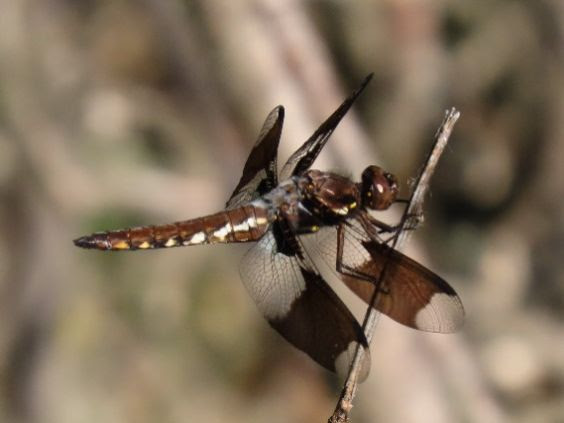Kelly’s first photo almost had us believing this dragonfly had four wings on the left side, due to some shadows. The top dragonfly is a female and the bottom is a male.
If you look closely at the wings you will notice some key differences. The male’s outer part of the wings is black with clear tips and there is a small, white patch next to the black bar at the base of the hindwing. Females have a bar at the base of each hindwing but have black wingtips, and a large black spot near the middle of the wings. The abdomens look similar but that won’t always be the case. As males age, they develop a thick, waxy coating on their bodies, lending them a bluish-white appearance. Males of many Skimmer species (family Libellulidae) develop this. Check out the identification section on this page to see examples of this progression.
Common whitetails, as well as other skimmers, sit on a perch and wait for insect prey to fly past. Once spotted, they sally out in pursuit, often returning to the same perch. Look for these effective predators along muddy-bottomed streams, ponds, and lakes all summer long. If your summer travel plans take you to one of the other contiguous states, south to Mexico, or north to a handful of Canadian provinces, you might see them there too!
Photos by: Kelly Dix on 6/27/21 at the Lee Metcalf National Wildlife Refuge near Stevensville, MT
